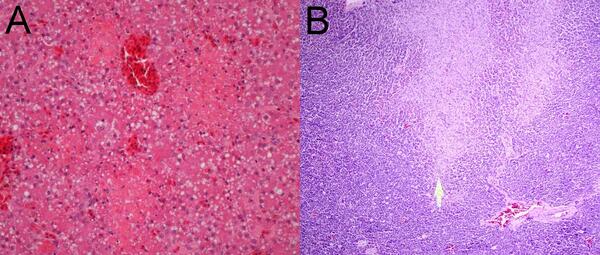Since 2014, widespread, annual mortality events involving multiple species of seabirds have occurred in the Gulf of Alaska, Bering Sea, and Chukchi Sea. Among these die-offs, emaciation was a common finding with starvation often identified as the cause of death. However, saxitoxin (STX) was detected in many carcasses, indicating exposure of these seabirds to STX in the marine environment...
Authors
Robert Dusek, Matthew Smith, Caroline Van Hemert, Valerie Shearn-Bochsler, Sherwood Hall, Clark Ridge, Ransome Hardison, Robert Kaler, Barbara Bodenstein, Erik Hofmeister, Jeffrey Hall



















